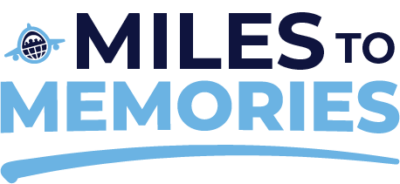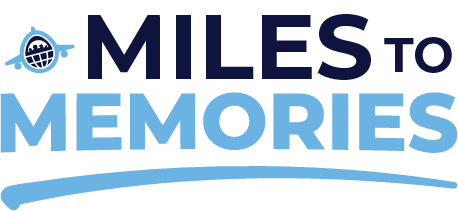
My Path to Achieving Financial Independence – Part 2
I began describing my path to achieving financial independence here. I’ve been blessed with parents who taught me financial principles from a young age, a stable upbringing where I made mistakes while learning from them, and higher education opportunities based on my efforts, my own savings, and support from my parents. After college, I had settled into a stable, albeit not financially lucrative, job. However, I still had plenty of growing and learning to do, financially-related and otherwise. I’ll continue to highlight what I learned, what I did right, and what I would do if I could start over.
#4. I Advanced Professionally and Financially
In my mid-20’s, I had settled into a healthy financial routine of supporting myself and increasingly saving and investing. I felt content with my financial health by contributing up to the matching amount in my employer-sponsored retirement plan, and I picked aggressive funds. I opened a Roth IRA in my mid-20’s, something I should have done earlier. And during this timeframe, I obtained my first credit card earning frequent flyer miles, a United Mileage Plus card from Chase! I moved most of my spending from my Citi Dividend card to the United card. I wish I still had that Dividend card!
Promotions
Also during this timeframe, I received periodic promotions and related pay increases. These weren’t huge increases, but at my age, anything was big. I’m glad I learned at that point about the importance of avoiding lifestyle creep, where more resources are spent towards standard of living; what were once considered luxuries are now perceived as necessities.
Fortunately, I had enough discretionary income prior to being promoted that I didn’t want for more once I got promoted. I attribute my satisfaction with the discretionary income from my entry level salary due to its scarcity during my childhood from the saving my parents required. In other words, The discretionary income bar was so low when I was a child, raising it just a bit was enough for me.

Higher Savings and Investment Rates
Consequently, when I got salary bumps, I placed virtually all of the increases into savings, investments, and charitable giving. Meanwhile, I didn’t allow lifestyle creep to set in, knowing that I felt rich with what I already had. I also enjoyed the tax angle of my efforts, knowing the more contributions I made to my employer-sponsored retirement plan lowered my taxable income that would have otherwise increased.
My enthusiasm continued as I reached the maximum allowable employee contribution limit to my retirement plan. I had been contributing the maximum to my Roth IRA for a few years by that point, as well. I continued making all investments in stock funds. Things were going well!
Additionally, I had more savings that I invested in a taxable brokerage account. I became more active in the stock market, but I quickly realized I was not ready for the time commitment in order to be successful. I sold everything I had invested about one year after opening the brokerage account. Instead, I saved in other then-solid return interest bearing accounts. Years later, I opened another brokerage account again when I was ready, but I have never became a huge player in this investment area.
What I Did Right: Maxed out my employee contributions to my employer-sponsored retirement plan soon after reaching my mid-20’s. Continued with maximum Roth IRA contributions and investments. Resisted lifestyle creep.
If I Could Start Over: Reach my maximum retirement contributions earlier. Learn more about investment strategies beyond employer plans and Roth IRA’s. Apply for more credit cards to maximize rewards programs.
#5. A Few Big, Bad Surprises
2008 Financial Crisis
While I was keeping my head down at work, the 2008 financial crisis hit. All investors seemed to feel it in some way. Fortunately, one area where I’m not emotional is investing. I didn’t pull anything out or make any changes to “lessen the blow.” From my perspective, this, like several other times in my life, was a test of my principles. If I had previously stood for aggressively investing, I certainly wouldn’t abandon that principle now. If I did, it was never a principle!
Indeed, not only did I not make any moves for perceived mitigation, I, and now, we, doubled down. I married a bit before the crisis hit, and my wife worked off and on since. When she started working part-time during the crisis, we saved almost her whole paycheck. After all, we didn’t need her salary to live on, and it would have just increased our taxable income, anyway. Therefore, she contributed the maximum-allowed amount of employee contributions to her employer-sponsored retirement plan. She lapped my first three years of investment totals in just a portion of one year.
Down the road, our investments had recovered to pre-2008 levels. More importantly, we rode the wave of exponential growth during and after the recovery. We are all going through a different, but likewise volatile, period currently due to COVID-19. As before, we are staying the course with our investments and have no intention of changing anything.

Fun with Real Estate
A few years prior, I began renting out my cherished bachelor pad – the one bedroom, one bathroom condo. Being a landlord is great, until it isn’t. I had reliable renters, until I didn’t. Long story short, I rented out the condo for a seven year timeframe, and two separate situations ended up leaving the condo unoccupied for almost one year total during that timeframe. Fortunately, I had hired a property management company to take care of the condo and related rental matters. This is, by far, some of the best money I have ever spent. I happily paid the small percentage to the company for them to deal with all of the rental matters. I saved so much time while only spending a relatively small amount of money. I’ve said it before, and I’ll say it again: You can make more money, but you cannot make more time.
How I Adapted
An unoccupied condo for almost a year? That’s a bunch of rent lost and a bunch of mortgage to cover! Remember that lifestyle creep I talked about earlier? I still resisted it when I rented out my condo. All rent went straight to savings – I never frivolously spent one penny of it. So when there was no rent coming in, not only did I avoid crisis since I didn’t need that money to live on, I had savings to cover the mortgage while it was unoccupied.
Soon after the second situation, I decided I was done with the rental game. I completed a few touch-ups to the condo and promptly sold the unit. I have the condo’s location to thank for the quick sale. Have you ever heard the saying that it’s best to buy the cheapest place in a nice neighborhood? It worked out well here. It was only 600 square feet, but I had learned my first full-circle lesson in the lucrative world of real estate.
What I Did Right: When allowed contribution limits increased (for my retirement plans and Roth IRA) and when my wife started working, we took every opportunity to max out these accounts. Stayed aggressive with investments. Avoided becoming an emotional investor.
If I Could Start Over: Instead of only using miles and points for certain vacations, I would use miles and points to cover all vacations. Convert more of my credit card rewards to cash for saving and investing.

Achieving Financial Independence – Wrapping Up For Now
You may have noticed that I have not brought up achieving financial independence since this article’s introduction. That’s because up to this point, I had never heard of it! Likewise, many of you may not have heard about it until recently, but you could be unknowingly on your way to achieving it. Also, for those of you who would like to take your financial game to the next level, whether it be to reach FI or not, you probably have more options than you think. Next, I’ll continue my story, describing how I learned about achieving financial independence and how I optimized to reach it.



Let’s get to one of the best “secrets” of FIRE, what you didn’t do, #6 have kids at a young age. You’re setting fire on $15-20k a year only on daycare.
How to NOT reach your FIRE goals: have kids, at a young age, before you accumulate great wealth.
ABC,
You bring up a great point, but I don’t think when kids arrive and the ability to reach FIRE is as clear cut as that in all cases. I do agree that child care costs in general are a huge, constantly-growing expense. Fairly soon after becoming parents, we decided we weren’t okay with that. As I mentioned in the article, my wife didn’t have paid employment at certain times when we were younger. Consequently, we did not rely on income from any of her jobs for daily living. Years down the road, this made her decision to leave the workplace fairly easy. But of course, this is just our experience, and I understand everyone has different considerations.
It’s a topic rarely discussed by those promoting FIRE. the ultimate FIRE guru Mr Money mustache barely covers the topic. Ultimately it’s a problem with the tax code. It favors wealth accumulation and tax labor much harder than capital gains.
ABC,
Thanks again for bringing up the topic. I’m a big Mr. Money Mustache fan, although I was unaware of the absence of info you mentioned. Meanwhile, it seems dependent care FSA’s are still a drop in the bucket – I just saw the annual limit is still $5k! Quite discouraging for working parents.
This comment just reminded me that I have to cancel my child dependent FSA contributions. My kid is no longer in daycare. Such an easy thing to forget to do if you aren’t paying attention.
“Instead of only using miles and points for certain vacations, I would use miles and points to cover all vacations. Convert more of my credit card rewards to cash for saving and investing.”
That’s tossed in as an aside but I think it’s what most of us are most interested in. Please elaborate.
John,
Thanks for your interest. I’m actually planning to focus more on that in a dedicated, separate article. But if I could start over, I would try to be more adept and all encompassing with my travel currencies for all travel. And instead of focusing primarily on frequent flyer miles and hotel points in my earlier days in the hobby, I would focus more on cash back for saving and investing.
Thanks again for this series. I find it insightful and hopefully others do as well.
Christian,
I appreciate the comment and am glad it was worth reading for you!